Thermosiphon solar water heaters offer five excellent design options for eco-friendly hot water. You can choose from a basic flat plate collector with a dark absorber plate and insulation, or a batch heater that combines the collector and storage tank. An integrated collector storage system provides a compact solution for mild climates, while evacuated tube collectors work well in colder regions. For a simple yet effective design, consider a serpentine pipe thermosiphon system. Each plan has unique features to suit different needs and climates, ensuring you'll find the perfect fit for your home. Exploring these options further will reveal their full potential and help you make an informed decision.
Basic Flat Plate Collector Design
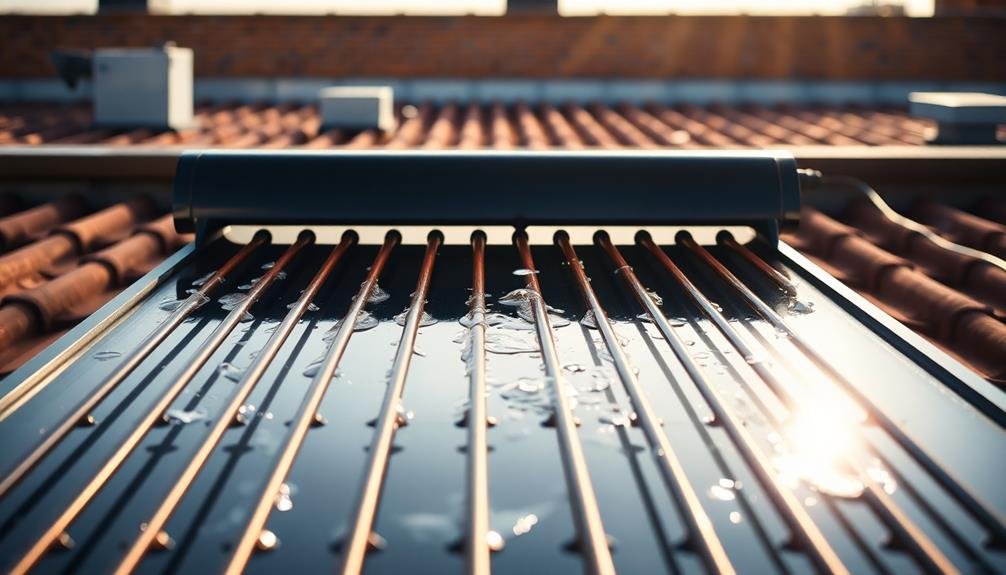
A basic flat plate collector is the heart of a thermosiphon solar water heater. It consists of a dark-colored absorber plate, usually made of copper or aluminum, encased in an insulated box with a transparent cover. You'll want to choose a material with high thermal conductivity for ideal heat transfer.
The absorber plate is typically coated with a selective surface that maximizes solar absorption while minimizing heat loss through radiation. You'll need to attach copper pipes or tubing to the absorber plate in a serpentine or parallel pattern. These pipes will carry the water or heat transfer fluid through the collector.
To improve efficiency, you should insulate the back and sides of the collector box with materials like fiberglass or foam board. The transparent cover, often made of low-iron tempered glass, allows sunlight to enter while trapping heat inside.
When designing your collector, consider factors such as tilt angle, orientation, and size. You'll want to aim for a tilt angle equal to your latitude for year-round use, or adjust seasonally for ideal performance.
The collector should face true south in the Northern Hemisphere or true north in the Southern Hemisphere.
Batch Heater With Storage Tank
While flat plate collectors are common, another effective design for thermosiphon solar water heaters is the batch heater with storage tank. This system combines the collector and storage tank into a single unit, simplifying the overall design and reducing potential points of failure.
In a batch heater, you'll typically use a large, insulated tank painted black to absorb solar radiation. You'll position this tank within an insulated box with a glazed front facing the sun. As the water in the tank heats up, it naturally rises to the top, creating a thermosiphon effect.
You'll connect the batch heater to your home's plumbing system, with cold water entering at the bottom and hot water exiting from the top. To improve efficiency, you can add reflectors around the tank to concentrate more sunlight onto it.
One advantage of batch heaters is their simplicity and durability. They're less prone to freezing than other designs and can often last for decades with minimal maintenance.
However, they're generally less efficient than flat plate collectors and can be quite heavy when filled with water.
Integrated Collector Storage System
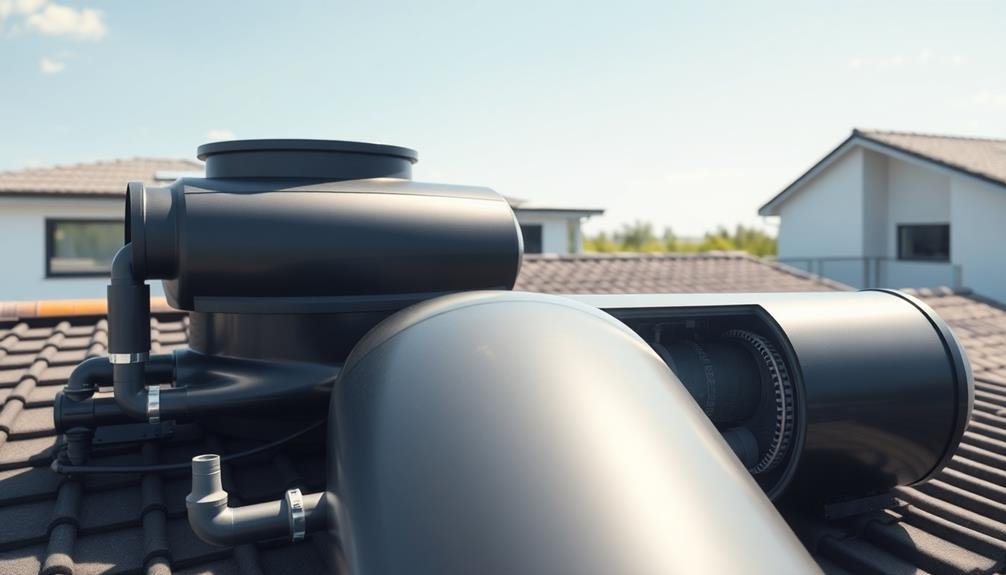
For DIY enthusiasts seeking a compact solution, the Integrated Collector Storage (ICS) system offers an appealing option. This design combines the collector and storage tank into a single unit, simplifying installation and reducing space requirements.
You'll find that ICS systems are particularly well-suited for areas with mild climates and infrequent freezing temperatures.
To build an ICS system, you'll need a large, insulated tank painted black to absorb solar radiation. Position this tank within a weatherproof, glazed enclosure tilted at an ideal angle for your location. The tank's upper portion serves as the hot water outlet, while the lower section acts as the cold water inlet. As water in the tank heats up, it naturally rises, creating a thermosiphon effect.
You can enhance the system's efficiency by adding reflective surfaces around the tank to increase solar gain. Insulate the back and sides of the enclosure to minimize heat loss.
Remember to include a tempering valve to prevent scalding and a backup heating element for cloudy days. While ICS systems are simpler than other designs, they're less efficient in colder climates and may require additional freeze protection measures.
Evacuated Tube Collector Plan
Immerse yourself in the world of evacuated tube collectors, a highly efficient option for solar water heating. These systems consist of parallel rows of glass tubes, each containing a heat pipe surrounded by a vacuum. This design minimizes heat loss, making evacuated tube collectors ideal for colder climates or areas with less direct sunlight.
To build your own evacuated tube collector, you'll need to purchase pre-manufactured tubes and a manifold. Start by mounting the manifold on your roof at the appropriate angle for your latitude. Next, insert the heat pipes into the manifold and attach the glass tubes. Verify proper sealing to maintain the vacuum integrity.
Connect the manifold to your storage tank using insulated piping. Install a pump and controller to regulate water flow between the collector and tank. Add a temperature sensor to monitor the system's performance.
When designing your system, consider factors like roof space, daily hot water needs, and local climate. Evacuated tube collectors typically require less roof area than flat-plate collectors for the same output.
Remember to include safety features such as pressure relief valves and expansion tanks in your design.
Serpentine Pipe Thermosiphon Design
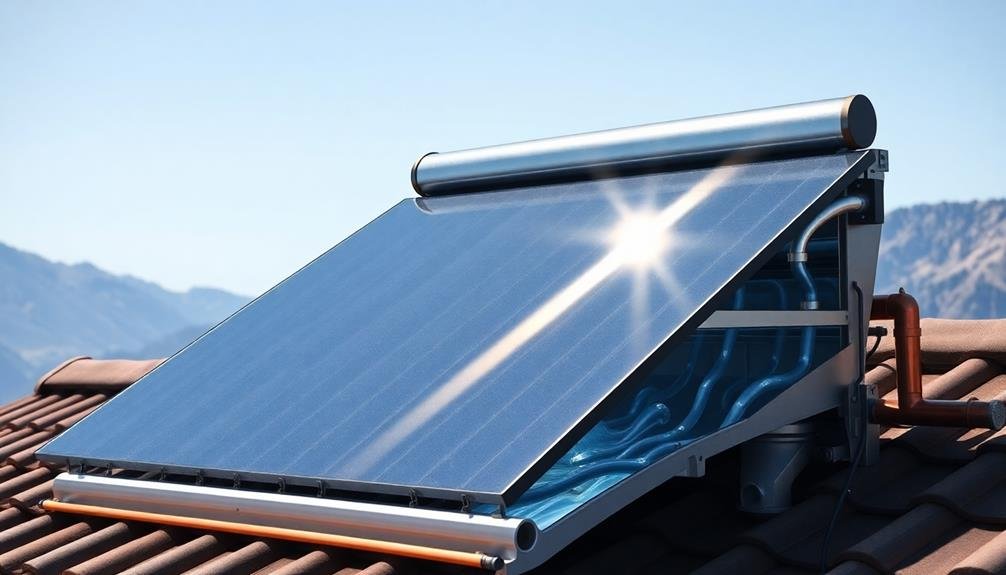
A serpentine pipe thermosiphon design offers a simple yet effective approach to solar water heating. In this system, you'll use a continuous pipe that snakes back and forth within a flat plate collector. The pipe's serpentine shape maximizes the surface area exposed to solar radiation, improving heat transfer to the water inside.
To build this design, you'll need copper piping, a flat plate collector, insulation, and a storage tank. Start by creating the collector frame and attaching the absorber plate. Then, carefully bend the copper pipe into a serpentine pattern and secure it to the absorber plate.
Verify proper insulation behind the plate to minimize heat loss. Connect the lower end of the serpentine pipe to the cold water inlet of your storage tank, and the upper end to the tank's hot water outlet. As the water in the collector heats up, it'll naturally rise and flow into the storage tank, while cooler water from the tank's bottom will enter the collector.
This continuous circulation occurs without the need for pumps, making it energy-efficient and low-maintenance. Remember to position your collector at an ideal angle for your location to maximize solar exposure throughout the year.
Frequently Asked Questions
How Long Does It Take to Install a Thermosiphon Solar Water Heater?
You'll typically need 1-2 days to install a thermosiphon solar water heater. The time can vary based on your skill level, system complexity, and any necessary roof modifications. It's often quicker than installing active solar systems.
What Maintenance Is Required for a Thermosiphon Solar Water Heating System?
You'll need to perform regular maintenance on your thermosiphon solar water heater. Check for leaks, clean the collector, inspect insulation, and flush the system annually. Don't forget to winterize if you're in a cold climate.
Can Thermosiphon Solar Water Heaters Work in Cold Climates?
You can use thermosiphon solar water heaters in cold climates, but they're less efficient. You'll need extra insulation, antifreeze in the system, and possibly backup heating. They work best in areas with milder winters and consistent sunlight.
How Much Does a Typical Thermosiphon Solar Water Heater Cost?
You'll typically spend $1,000 to $3,000 for a thermosiphon solar water heater. Prices can vary based on size, quality, and installation costs. DIY options might be cheaper, but professional installation guarantees peak performance and longevity.
Are There Any Government Incentives for Installing Thermosiphon Solar Water Heaters?
Yes, you'll find government incentives for installing thermosiphon solar water heaters. You can get federal tax credits, state rebates, and local grants. Check with your state's energy office or the Database of State Incentives for Renewables & Efficiency (DSIRE).
In Summary
You've now explored five excellent thermosiphon solar water heater plans, each with unique benefits. Whether you choose the simple flat plate collector or the efficient evacuated tube design, you're on your way to harnessing solar energy for your hot water needs. Remember to take into account your climate, budget, and skill level when selecting a plan. With some DIY effort, you'll soon be enjoying eco-friendly hot water and lower energy bills. Get started on your solar project today!

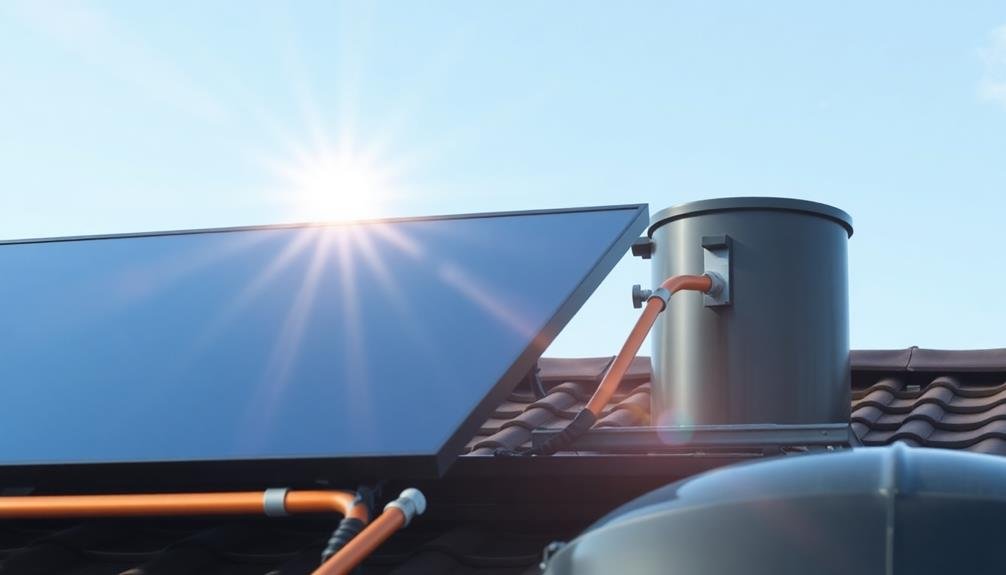
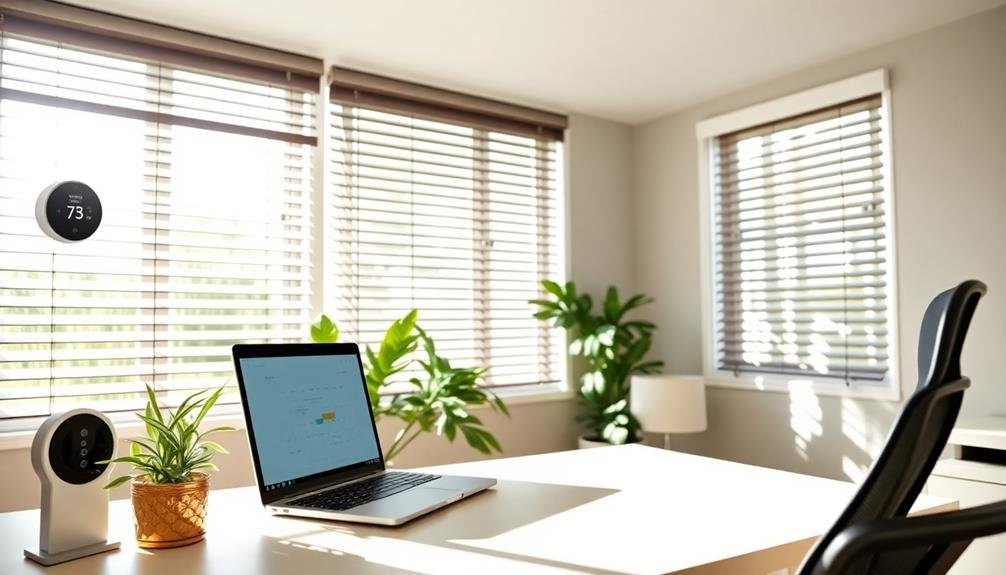
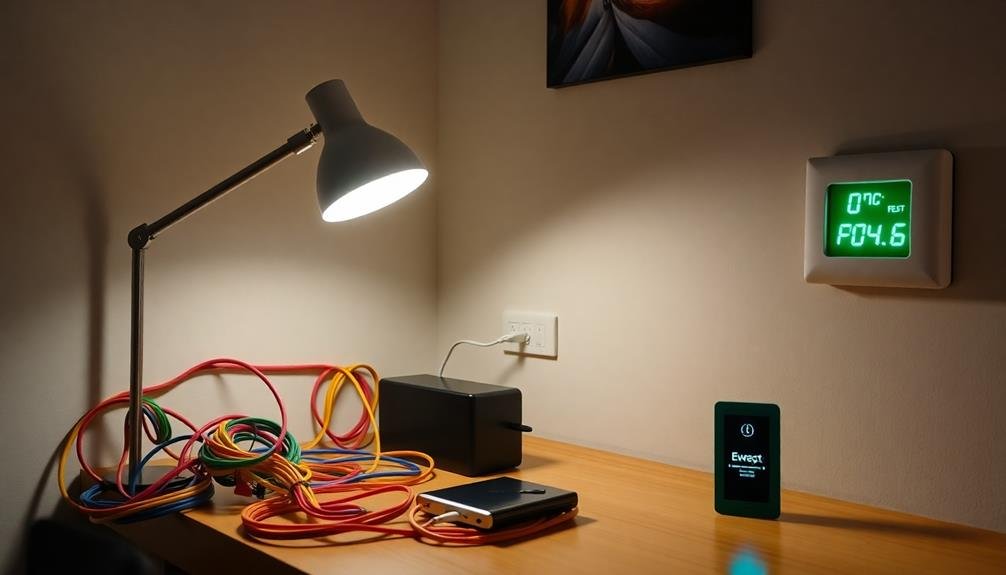
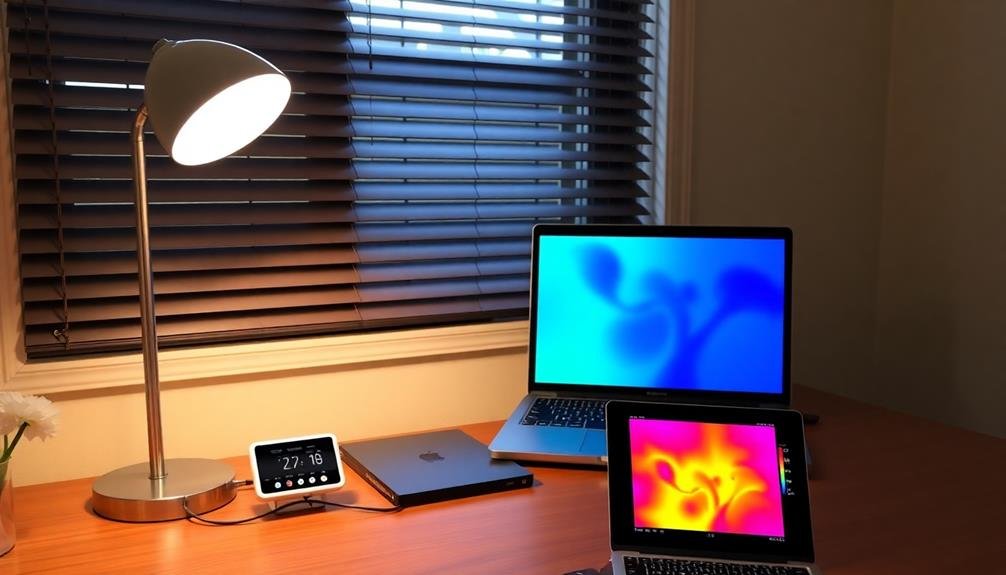
Leave a Reply